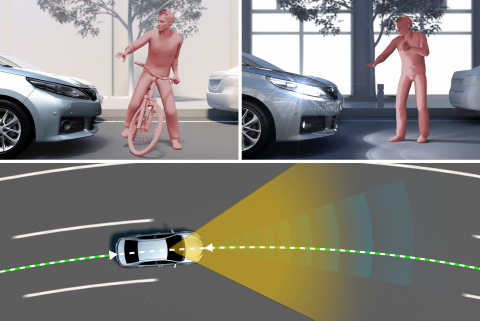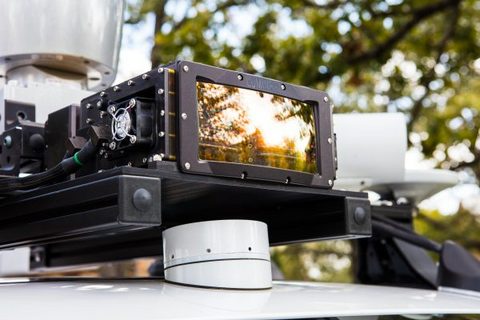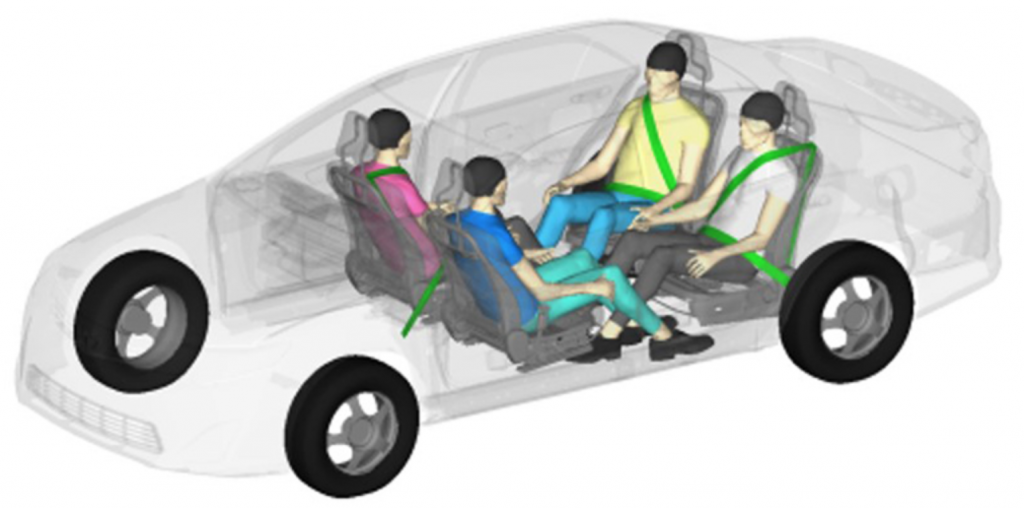Technology is Advancing, But Lives on Test Tracks For Now
Clean Fleet Report is not alone in wondering about self-driving cars. We want to know about the current level of technological and engineering development, and when they will be road-ready for consumers. We had the special opportunity to get a behind-the-scenes look at one company’s progress when we sat down with Nathan Kokus, mobility and technology communications manager at Toyota.
We kept the questions short and to the point, specifically asking what was coming next and the challenges to reach the pinnacle of autonomous driving: Level 5.

CFR: Tell us a bit about what your team does at Toyota.
Kokus: We handle all of Toyota’s future and emerging technologies that are in the autonomous, robotics and mobility space. We are launching our autonomous and automated technologies in the effort to improve the safety and security of our customers in the U.S. market.
CFR: What concerns are there that your engineers and developers are working to ease?
Kokus: Toyota is working on technologies that help anticipate, perceive, reduce and, hopefully, eventually eliminate fatalities. We recognize there is an issue with fatalities in the automotive market, where we are approaching 40,000 vehicle fatalities in the U.S. annually. We believe this number can be greatly reduced with automated technologies that help enhance the skill of the driver to avoid these terrible tragedies.
CFR: So where is Toyota currently with autonomous driving?

Kokus: Currently we are using Toyota Safety Sense and Lexus Safety System Plus, both of which are Level 1 and include automatic emergency braking and some avoidance technologies. With these we can slow the vehicle to minimize the impact of a crash, or in some cases, stop the car to avoid the accident entirely. Level 2 is what we call our Guardian Philosophy, which enhances the driver capability even more and is where the vehicle takes more control. The driver is there observing the situation and looking out for non-typical events where they might need to take over control.
CFR: What examples are there for Level 2?
Kokus: In a day-to-day driving situation, such as congestion driving when on the highway, you can safely engage the automated system where it would take over and keep a safe distance from the vehicle in front, including bring the car to a stop. These are the areas we are testing right now.
CFR: What about the most advanced stages of Level 4 and Level 5?
Kokus: On a closed track we can do both Level 4 and 5 today, where there is no driver in the vehicle. We have accomplished this by limiting the use case and the test case to the track parameters. Where it gets tricky is when there are surprises, such as when something jumps out, or there is reflection that blocks the sensors. This is when the systems have challenges to what has been programmed.

CFR: Level 4 includes Geofencing and Weather-fencing. Can you tell us where Toyota is with these?
Kokus: Some of our advanced research teams at the Toyota Research Institute are looking at the technologies needed for Level 4 and 5 autonomous driving, that’s automated driving capability. On a closed course, we are able to handle a geofenced-like environment where we know the mapping down to a few inches in detail, which is required for that level of driving. This is where the vehicle knows every single inch of that specific route. Where we still need to do work is the edge case aspect of driving. To get to Level 5 we need to work on any kind of impediment, whether it be weather-related or a surprise aspect such as an animal running across the road, where it might not register within the programing of the computer. There needs to be enough artificial intelligence so that an unexpected impediment can be perceived and acted upon appropriately where a driver does not need to intervene.
In limited cases there is opportunity to utilize these systems of Level 4 that are not on a track. However, we are still a few years away from that, just due to the fact you need more processing power, getting system redundancies in place, and where we are completely comfortable with a driver not being in the driver seat.
CFR: What governmental and insurance challenges will come into play to get to Level 4 and 5?
Kokus: There’s a lot. Government will need to allow that type of driving on the roads, and this includes the many local municipalities. Regarding insurance, liability needs to be clearly established, including cause and responsibility, for any type of mishap. So, there is a lot of work that still needs to be done from the regulatory, insurance and government standpoints.
CFR: In the long road to Level 4 and 5, there are already many advanced driver safety systems on Toyota and Lexus vehicles. These include, to name a few, blind spot monitoring with rear cross traffic alert, steering and lane keep assist, adaptive cruise control, pre-collision system with pedestrian detection, and lane departure alert with steering wheel and lane keep assist. These systems are already making driving safer as the car is able to automate some of the maneuvers that a driver is not doing properly. What are the challenges Toyota is having for drivers to not turn-off these systems and learn to use and trust them?
Kokus: Getting people to use the technology is all about educating them as to why the systems are important, how they enhance their driving ability, and do not take away from their driving experience. They need to understand these systems are a benefit to them and not a detriment.
The best way to do this is through the experience of seeing the vehicle is not going to take over, and showing them, maybe through simulation, a demonstration how automated corrective action will enhance their driving skill. We have a term for it as “blended envelope control” which is a blend of driver skill set, but with computer control. So, you have both benefits at once.

CFR: What is the future, and the end goals for Toyota autonomy and safety technologies?
Kokus: We are taking a very measured and methodical approach with our current safety systems of Toyota Safety Sense and Lexus Safety System Plus. We are adding to those to enhance driver capability with the opportunity to reduce accidents, injuries and even fatalities, throughout the world. Our outlook is to continue to add technology as quickly and safely as possible to enhance the driver experience, and then ultimately of riders in vehicles.
Make sure to opt-in to the Clean Fleet Reportnewsletter (top right of page) to be notified of all new stories and vehicle reviews.
Related Stories You Might Enjoy—Toyota/Lexus Models with Advanced Driver-Assist Technology
Flash Drive: 2019 Toyota Prius AWD-e Hybrid
Road Test: 2019 Lexus LC 500h Hybrid
Road Test: 2019 Toyota RAV4 Hybrid
Road Test: 2019 Lexus UX 250h Hybrid
Road Test: 2020 Toyota Corolla Hybrid
Road Test: 2019 Lexus LS 500h Hybrid
News: Lexus LS 500h Hybrid Is New Self-Driving Test Car
Road Test: 2019 Toyota Avalon
Road Test: 2019 Lexus RC 300
Road Test: 2019 Toyota Prius
Road Test: 2019 Lexus RX 450h Hybrid
Road Test: 2019 Toyota Yaris Sedan
Comparison Test: A Pair of Toyota Prius
Road Test: 2019 Toyota Camry
Road Test: 2019 Toyota Land Cruiser 4WD
Road Test: 2019 Toyota Avalon Hybrid
Road Test: 2019 Toyota Mirai
Road Test: 2019 Toyota Camry Hybrid

4 thoughts on “Interview: Toyota and Lexus: Autonomous Driving Advancements”